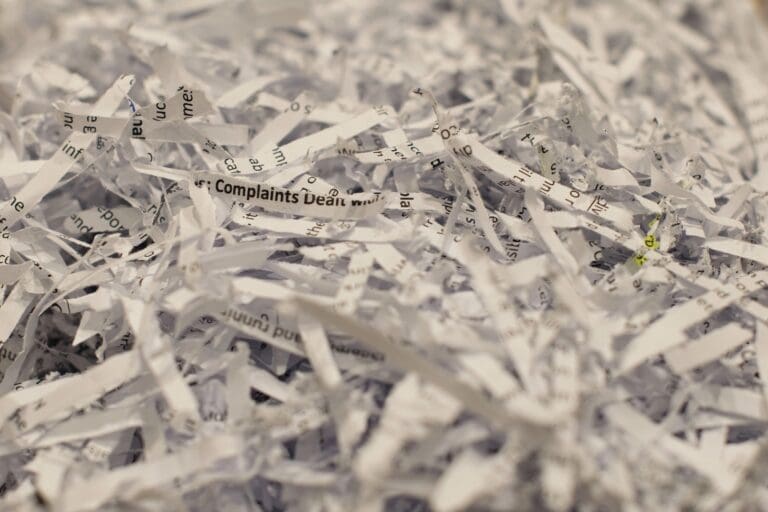Laminators and shredders are essential tools for document management, allowing organisations to protect, preserve, and securely dispose of important papers. Whether you’re looking to enhance the durability of materials or safeguard sensitive information, understanding the options and functionalities of these machines is essential for making the best choice.
Importance of Document Management
Before diving deeper into laminators and shredders, it’s important to understand the importance of document management. While the world is increasingly going digital, physical documents still hold value in industries such as education, healthcare, and law. Effective document management practices, which often include the use of laminators and paper shredders, enable businesses to organise, protect, and securely discard sensitive information.
What Are Laminators and Shredders?
Laminators and shredders serve opposite yet complementary purposes in document management.
A laminator is a device that applies a protective plastic coating to documents, photos, or other materials. Originally created for preserving military documents, laminators have become valuable in schools and offices, providing an affordable way to protect documents.
A paper shredder cuts documents into small pieces for secure disposal. Shredders date back to 1935 when they were first used to protect confidential information. Today, shredders are an essential part of data security practices worldwide, with advanced models designed to meet industry-specific compliance requirements.
Types of Laminators and Shredders
Choosing the right equipment for document management begins with understanding the different types of laminators and shredders and their specific uses.
- Pouch Laminators: Pouch laminators are ideal for individual items such as ID cards, signs, and small documents. They use laminator pouches available in various sizes, making them a versatile choice for most school and office needs.
- Roll Laminators: Roll laminators are designed for high-volume tasks and can laminate larger documents, posters, and signs. They are commonly used in educational institutions, print shops, and offices with significant laminating requirements.
- Cold Laminators: Cold laminators do not require heat and are perfect for temperature-sensitive documents, such as photographs. Instead of melting adhesive, cold laminators use pressure to seal laminator sheets around documents.
- Strip-Cut Shredders: Strip-cut shredders slice documents into long strips. They are suitable for low-security needs but are not ideal for confidential information due to the relatively large size of the shreds.
- Cross-Cut Shredders: Cross-cut shredders provide more security by cutting paper both vertically and horizontally, creating small, unreadable pieces. This makes them a good option for general office document disposal.
- Micro-Cut Shredders: Micro-cut shredders offer the highest level of security, reducing documents to tiny particles. These shredders are essential for businesses that deal with highly sensitive information.

How to Choose a Laminator or Shredder
When deciding on a shredder or laminator, consider the volume of use, level of security, and types of documents you work with.
The choice of laminating machine depends largely on the types of documents you intend to laminate. For smaller items like ID cards or photos, pouch laminators are ideal. On the other hand, roll laminators are better suited for handling larger documents in high-volume environments such as schools and offices. Laminating speed and warm-up time should also factor into your decision, especially if you have significant laminating needs – faster models with reduced warm-up times can keep pace in busier settings.
For shredders, identifying the security level your office requires is critical. For documents with sensitive or confidential information, a cross-cut or micro-cut shredder provides a greater level of security by turning paper into much smaller pieces than a strip-cut shredder, which might suffice for less sensitive materials. In addition, the sheet capacity and runtime of the shredder are key. Businesses with high shredding demands benefit from models that can handle a larger number of sheets per pass and run continuously without frequent cool-downs.
Evaluating these features ensures you’re equipped with a laminator or shredder that efficiently meets your document management and security needs, promoting a smoother, more effective workflow.
Benefits of Laminating and Shredding Documents
Both laminating and shredding documents offer unique advantages that contribute to a well-rounded approach to document management.
Laminating is particularly beneficial for durability and protection, creating a waterproof and stain-resistant layer that extends the life of commonly handled documents. This is advantageous for materials like training guides, signage, or certificates that need to be preserved for repeated use. Laminated items also gain a polished, professional appearance, making them suitable for display in office spaces or as visual aids.
Shredding documents, however, serves a different but equally vital purpose by enhancing data security and helping businesses comply with regulations around confidential information disposal. For example, shredding sensitive documents helps prevent data breaches and identity theft, especially for companies dealing with personal or financial information. In addition, shredding makes it easier to recycle paper responsibly, supporting environmental initiatives by ensuring shredded paper can be repurposed effectively.
Both processes are valuable for maintaining organised, secure, and sustainable work environments, and together, they provide a comprehensive approach to managing physical documents.
Maintenance Tips for Laminating and Shredding Machines
Regular maintenance keeps laminators and shredders running smoothly and extends their operational life.
Laminators require consistent cleaning of the rollers to prevent dust and adhesive buildup, which can otherwise lead to jams and reduce lamination quality. Adjusting temperature settings based on the type of laminator pouch or sheet being used is also crucial as using excessive heat can damage temperature-sensitive materials and compromise the lamination process. Feeding one item at a time can also help avoid jams and promotes even lamination.
For shredders, oiling the blades regularly is essential for preventing jams and maintaining cutting efficiency, especially for cross-cut or micro-cut shredders that handle finer shredding tasks. The waste bin should be emptied frequently, as a full bin can cause jams and hinder performance. It’s also critical to avoid overfeeding by adhering to the recommended sheet capacity.
Proper maintenance of both machines ensures a longer life and better performance, allowing these tools to operate effectively in any office setting.
Troubleshooting Common Issues
Both laminators and shredders can experience common issues, but many can be resolved with a few simple steps.
Laminator jams, for example, are often due to misaligned laminator pouches. Clearing jams carefully and ensuring items are straight and centred before feeding them can help prevent repeat issues. If lamination appears uneven or bubbled, inconsistent temperature is a likely culprit; allowing the machine to fully warm up and confirming the correct temperature setting may resolve this problem.
For shredders, jams frequently result from overfeeding, which can be cleared using the reverse function or, if needed, manually removing the stuck paper. Overheating is another common issue, especially after prolonged use; in these cases, allowing the shredder to cool down before resuming operation is important. Reduced cutting efficiency is often a sign that the blades need oiling; applying shredder oil can help restore performance and prevent future jams.
By addressing these common problems proactively, you can keep laminators and shredders in optimal working condition, ensuring uninterrupted productivity.

